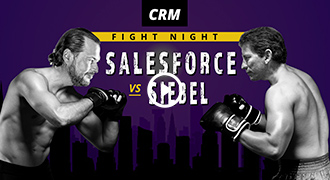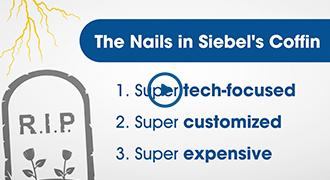
Part 1: Siebel vs. Salesforce
Who doesn’t love a great business story?! The battle for the CRM market waged between Siebel and Salesforce was epic. And the objections Salesforce overcame will sound totally familiar to you telco execs.

There were fundamental flaws in Siebel’s strategy. Learn why Salesforce was destined to win and Siebel was destined to lose – and how this applies to telcos’ journey to the public cloud.
Everyone talks about the great business story of Salesforce vs. Siebel, but no one talks about why Salesforce was destined to win and Siebel was destined to lose.
People were wrong because they forgot three key issues about Siebel:
When you compare the two companies on these dimensions, it’s not even close. Salesforce has been the clear winner for decades.
So what can we learn from this?
Recent Posts

 Get my FREE insider newsletter, delivered every two weeks, with curated content to help telco execs across the globe move to the public cloud.
Get my FREE insider newsletter, delivered every two weeks, with curated content to help telco execs across the globe move to the public cloud.